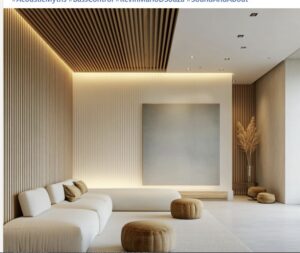Are Bass Traps just for Music Studios?
Think bass traps are just for music studios? That’s like saying airbags are just for race cars.
In luxury spaces, there’s a persistent myth that bass control is purely for musicians. Yet low frequencies are like that determined party guest – they’ll find their way into every room, invited or not.
Here’s the reality: Bass frequencies treat your walls like revolving doors. Those muffled video conferences where everyone sounds like they’re speaking underwater? That’s uncontrolled bass turning your pristine space into acoustic soup.
Let’s dive into the science (without the headache):
• Bass waves are 3-8 metres long – they don’t even notice your walls
• They build up in corners like compound interest – exponentially
• Standard absorption panels? To bass, they’re practically decorative
• Low frequencies need serious space to be controlled
Picture trying to catch an elephant with a butterfly net. That’s your typical acoustic panel attempting to handle bass. Technically possible? Doubtful. Practical? Definitely not.
Modern solutions are far from the foam wedges of recording studios:
• Architectural features that double as bass control
• Microperforated designer panels that look stunning
• Integrated corner treatments that enhance aesthetics
• Solutions that complement premium interiors
The truth is, every space needs bass control – from boardrooms to ballrooms. Uncontrolled bass doesn’t just affect music; it muddles speech, clouds clarity, and creates acoustic confusion.
Next time someone says bass traps are just for studios, remember: controlling bass is like managing traffic – ignore it, and everything comes to a standstill.

